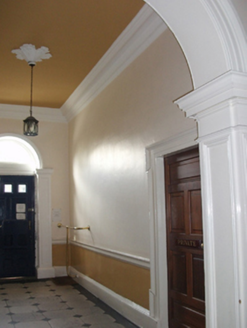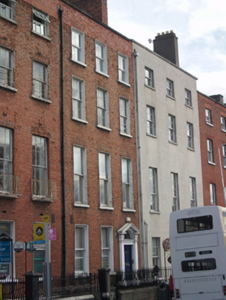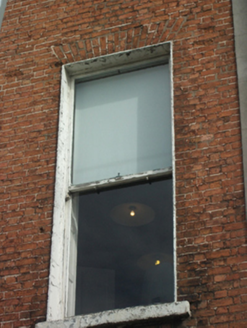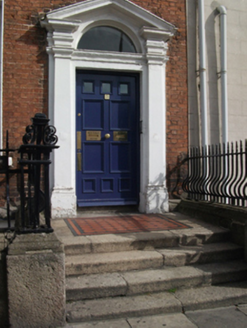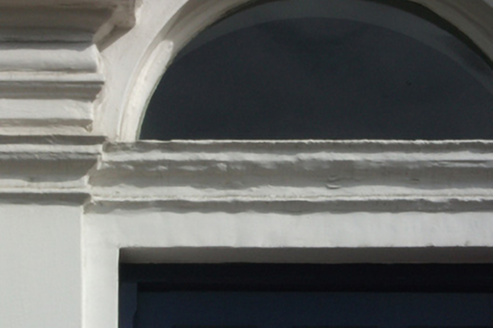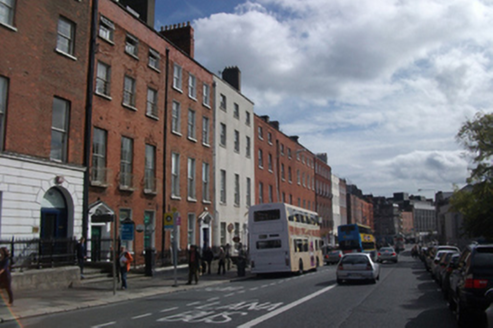Survey Data
Reg No
50011014
Rating
Regional
Categories of Special Interest
Architectural, Artistic
Original Use
House
In Use As
Office
Date
1750 - 1760
Coordinates
315744, 235121
Date Recorded
26/09/2011
Date Updated
--/--/--
Description
Terraced three-bay four-storey house over exposed basement, built 1753-5, now in use as offices. Built as pair with No. 9. Pitched slate roof behind rebuilt parapet wall with squared granite coping. Rendered and red brick chimneystacks with clay pots to party walls, shared with adjoining houses. Cast-iron rainwater goods. Flemish bond red brick walls with granite plinth course over rendered ruled-and-lined walls to basement level. Gauged red brick flat-arched window openings with rendered reveals and granite sills. Slate-veneer sills to basement level. Early replacement timber sliding sash windows, two-over-two pane to basement and top floor, one-over-one pane to ground and first floors, and six-over-six pane to second floor. Round-headed door opening within pedimented painted stone doorcase comprising replacement timber panelled door flanked by engaged Doric pilasters on plinth blocks supporting stepped lintel cornice, with entablature forming support to open-bed pediment housing plain fanlight. Door opens onto granite-flagged platform with inset Victorian tiles and granite stepped approach bridging basement. Approach flanked by nineteenth-century wrought-iron railings with wrought and cast-iron boxed corners on granite plinths. Wrought-iron gate accessing basement via recent steel staircase. Recent single-storey extension to rear with slate roof and two-storey red brick mews. Entrance hall having black and white limestone-flagged floor with simple Rococo ceiling and heavy cornice. Ground floor front room having Neo-classical cupboards. Rear room having dentillated cornice. Stair hall having lugged architraves at half-landing, heavily moulded architrave and gesso tread ends. First floor front room bisected, having coved ceiling with Rococo frieze and egg-and-dart cornice. Original windows to rear room with cornucopia frieze to coved ceiling.
Appraisal
This fine house with its pleasant symmetrical façade was built as a pair with No. 9 in 1753-5 by Lewis Thomas. The retention of various historic features such as a fine doorcase, timber sash windows and pleasant masonry work has helped maintain the building's early aspect. The house also retains modest but high quality Rococo and Neo-classical interiors with coved ceilings and some lugged architraves. Parnell Square was the product of Dr Bartholomew Mosse; in 1748 he leased four acres at the junction of three important sites; the Gardiner Estate, Sackville (now O’Connell) and Great Britain (now Parnell) Streets. There the New Gardens (now the Garden of Remembrance) were constructed, a landscaped tract of land with illuminated paths, obelisks and a loggia. Entrance fees to the gardens funded the construction of the Rotunda Hospital to the south, Mosse’s life ambition, and the success of the gardens precipitated the development of the surrounding square, largely by the hospital’s chief builders.
